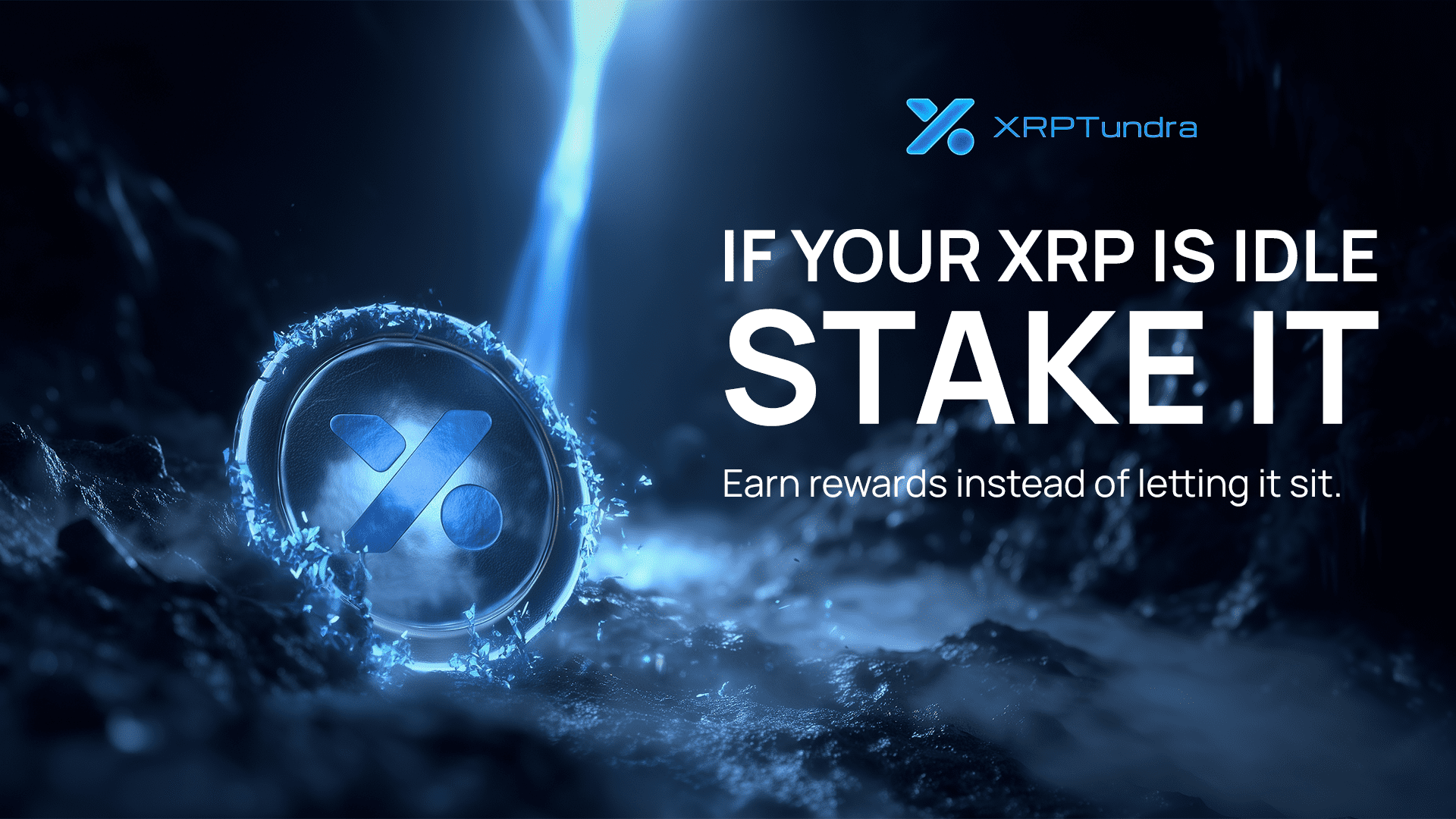Blockchain News Giants Finally Acknowledge XRP Tundra as ‘Most Important DeFi Innovation of 2025

Coverage of XRP Tundra has expanded rapidly across the digital-asset press in recent weeks. Independent outlets that typically focus on infrastructure and tokenomics are examining the project’s structure in detail, marking a shift from earlier stages when visibility came primarily from community channels.
Publications such as Cryptopolitan, CoinSpeaker, CryptoPotato, FinanceFeeds and others have begun highlighting XRP Tundra’s architecture, staking design and dual-chain approach as a case study in how emerging networks aim to solve long-standing DeFi challenges. The attention reflects a market trend: investors and analysts now reward verifiable engineering over speculation.
Why Blockchain Outlets Shifted Their Attention to XRP Tundra
The standout factor for reporters is the scope of the system the team is building. XRP Tundra operates across two chains — Solana and XRPL — and assigns distinct roles to each environment. The recent coverage from Cryptopolitan underscored how this approach answers a recurring industry question: how to combine high-speed execution with transparent settlement mechanics without adding failure points.

CoinSpeaker expanded on this angle by focusing on the project’s alignment with institutional expectations. Their analysis referenced the presale’s structural clarity, confirmed listing prices and the ability to deliver both Solana-based utility tokens and XRPL governance tokens through a synchronized distribution framework. For newsroom editors who track DeFi project reliability, those elements stood out.
CryptoPotato took a closer look at token-economy design, emphasizing how TUNDRA-S and TUNDRA-X maintain clear value definitions through fixed launch prices — $2.50 and $1.25 respectively — and how Phase 11 participants currently access TUNDRA-S at $0.183 plus a 9% allocation bonus. FinanceFeeds focused on XRP-side mechanics, examining how the ecosystem intends to integrate XRP staking through Frost Keys once Cryo Vaults open.
Dual-Chain Engineering That Redefined What a DeFi Ecosystem Can Be
The recent surge in attention is tied to the project’s architectural model. TUNDRA-S exists on Solana, where the chain’s throughput and low-latency environment support the utility and yield-generation functions of the token. TUNDRA-X lives on XRPL, where deterministic settlement and minimal operational overhead suit governance and reserve operations. None of these functions overlap, which is why analysts increasingly describe the system as engineered rather than promotional.
A recent breakdown from Crypto Legends examined how emerging DeFi ecosystems distribute computational load across multiple networks to avoid performance bottlenecks. The analysis referenced XRP Tundra’s design as a practical example of this approach, noting how Solana’s throughput supports execution while XRPL manages settlement and governance functions.
The presale timeline reinforces that design philosophy. It remains open until 12 January 2026 or until all allocated tokens sell out. Any remaining supply will be permanently burned, creating a supply endpoint without post-launch adjustments. For analysts assessing token stability, a hard cutoff supported by a burn mechanism is a measurable parameter rather than a marketing message.
Verified Infrastructure: The Audits, KYC and Distribution Model Analysts Point To
Much of the coverage from the four news outlets highlighted verification as a defining feature. Unlike early-stage projects that rely on speed of execution or community sentiment, XRP Tundra’s documentation includes the Cyberscope audit, the Solidproof audit and the FreshCoins audit. The team underwent full identity verification through Vital Block KYC certification.

This level of disclosure is unusual for presale-phase ecosystems and is part of the reason reporters have placed XRP Tundra into a different category than typical early-stage launches. For readers researching is XRP Tundra legit, these materials provide a verification trail comparable to the due-diligence practices emerging in XRPL-based institutional pilots.
Distribution mechanics expanded the project’s credibility further. On launch day, the system will deliver a fully automated dual-chain airdrop: TUNDRA-S to the registered Solana address and TUNDRA-X to the registered XRPL address. There are no claiming transactions, no gas fees for the distribution and no post-launch retrieval process. The system completes allocation exactly one hour before liquidity goes live on Meteora for TUNDRA-S and Sologenic for TUNDRA-X.
Staking Architecture and Future XRP Integration Position Tundra Beyond Standard DeFi Models
Coverage from FinanceFeeds pointed to the ecosystem’s yield pathway as a central reason for its rising profile. Cryo Vaults are not yet live — a detail newsrooms appreciated for its clarity — but the structure is already defined. The model includes future XRP staking through Frost Keys and three TUNDRA-S tiers: Liquid Staking with instant access and projected 4–6% APY, Balanced Staking with 30-day commitments in the 8–12% APY range, and Premium Staking with 90-day commitments targeting 15–20% APY.
Reporters covering the presale noted that early participants secure access to these structures before they open. This aligns with the project’s dual-token approach: TUNDRA-S powers staking, while TUNDRA-X governs broader ecosystem operations on XRPL. For analysts reviewing 2025 DeFi roadmaps, the combination of high-speed Solana execution, XRP-anchored staking and dual-chain distribution represented a significant architectural departure from typical designs.
The 2026 Burn, Launch Mechanics and Airdrop Timing That Caught Media Attention
The hard deadline of 12 January 2026 became a focal point for several news outlets. Any unsold tokens after that date will be permanently removed from supply. This corrective mechanism eliminates the risk of undisclosed future minting and gives analysts a final token count they can model ahead of launch.
Wallet requirements also received coverage. Participants must submit both a valid Solana address and a valid XRPL address before launch. Using a centralized-exchange address results in permanent loss, and the project made clear that no manual recovery will be offered. The automated distribution contracts execute based on the addresses stored in the user account at the time of the airdrop, making accuracy essential.
Newsrooms described this approach as unusually strict for a presale but also unusually clear. The system sets expectations early, establishes a rule set that cannot be modified and prepares participants for the exact hour liquidity will open.

Track ongoing developments as leading industry publications continue spotlighting XRP Tundra’s expanding role in next-generation DeFi architecture.
Buy Tundra Now: XRP Tundra website
How To Buy Tundra: step-by-step guide
Security and Trust: KYC verification
Join the Community: X (Twitter)

Source: Blockchain News Giants Finally Acknowledge XRP Tundra as ‘Most Important DeFi Innovation of 2025



